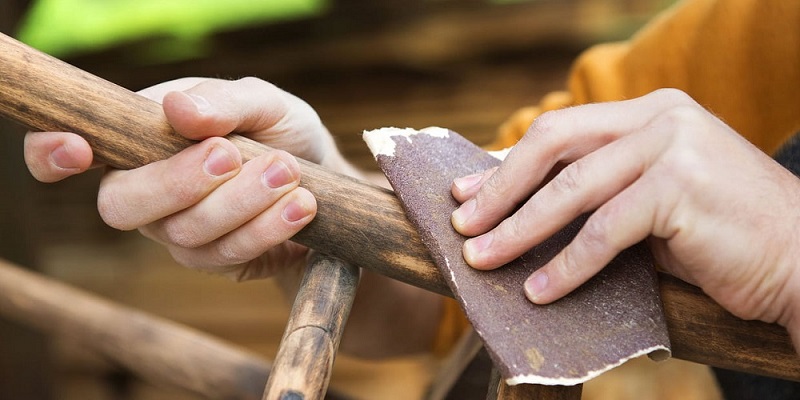
How to was a furniture? If you don’t have the heart to get rid of an old piece of furniture, you can give it a second life. Various techniques can be used to do this, but one of the most effective ways to restore its value is to use ceruse. Here are the steps to follow.
The preparation phase
In order to bring back a cupboard, a chest of drawers or even an old table to the taste of the day, you can give it a bright aspect by a well-known technique. This consists of highlighting the different grooves of the material by applying a few coats of product.
For example, it is possible to paint a wooden furniture with an aged effect to give it another interesting look. Enhancing the traces of wear and fading can also express its brilliance, but in this situation it is important to know how to patina a piece of furniture, and the result can become exactly the opposite of what you want if you make the wrong move.
Polishing
In any case, polishing a piece of furniture remains the most fashionable way today to give it a prominent place in your interior decoration. By applying a specific product on the different levels of the wood, you may be surprised by the results. The first step in the operation is to check the species in which the furniture was made.
You should know that the success depends primarily on the type of wood, and that those with visible veins are the most likely to give a good result. A piece of furniture in cherry wood will not produce the same effect as another more solid type such as chestnut or beech.
Once you have defined the type of material that makes up your cabinet, you can finalize this step of preparation, going to a specialized store to get wax. Depending on the species, you will have to choose a shade that will allow you to obtain the most original finish.
Generally, regardless of the type of support, you will use the same items to repaint a cherry wood piece of furniture or its counterpart in a different species. You’ll need clean rags, coarse and fine sandpaper, and a sanding block. Ceruse paint also requires a white undercoat or wood stain. A steel wool and a wire brush, preferably brass, may also be useful.
The execution and finishing phase
Once properly equipped, the first step in polishing a piece of furniture is to clean it. The base must obviously be completely clean to allow your old furniture to receive its rejuvenation. Proceed to a proper dusting, then wash with soap and water. Moisten the wood well, then scrub until the slightest stain disappears, so that everything is completely clean.
Then let it air dry for as long as it takes. Depending on the climate, this step can take days, so the best advice would be to proceed with the operation of the furniture ceruse during the warm season, not to leave the risk of deterioration of the wood to the humidity.
Sanding
When the furniture is dry and clean, you can tackle the biggest part of the work: sanding. The wax or the wax paste will reveal a beautiful furniture with a white aged effect at the end of the treatment. The method consists in using a fine-grained sandpaper to level the surface on a raw object.
However, if the wood has already been stained, painted or varnished, you must strip the coating with the coarse grit before finishing with the finer grit. As you go along, remember to dust. You can find a good accessory that will make the job easier and save you time by consulting a comparison of thermal blowers.
When all the relief and traces of sanding are gone, you can open the pores of the wood with the steel wool or the wire brush, in the case of a hard material. Waxed wood will look best if you do it in the direction of the grain, and manage to dig down to about a millimeter deep.
This is the right technique for the question of how to whitewash dark furniture. From then on, proceed gently and avoid pressing too hard, at the risk of leaving scratches on the already smooth wood.
If you are interested in contrasting touches, for a gray piece of furniture for example, consider repainting, or at least staining the wood before applying the whitewash. A white stain or undercoat will indeed mark the difference between the grain and the rest of the surface.
Always do this in the direction of the grain, using a cloth. A second cloth will help you remove the excess stain and even out the treated areas. Let dry, then sand once more, lightly, with a fine grit paper, then dust off.
Now it’s time to get down to the nitty-gritty of polishing a piece of furniture. Spread the paste or wax generously over the entire surface, then rub it in with circular movements using a soft cloth.
Remember to work slowly and surely, treating a small area at a time, for example 50 x 50 cm. Your grey ceruse effect paint will come out even better. Remove any excess with a clean piece of cloth, always in the direction of the veins, then let it dry.
This last phase consists of sanding the furniture with a steel wool, but this time in the direction perpendicular to the fibers. This technique removes the ceruse from the smooth surfaces without eliminating the ceruse in the grain, with a white ceruse effect.
Again, dust off and apply a protective coat of colorless wax. Make a final polishing to finish.
